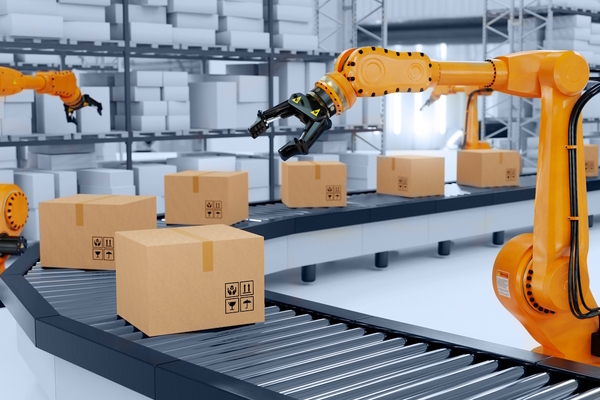An upgrade from crisps or an assault on healthy eating
Is the UK market ready for hot-food vending machines?

Food and drink vending machines have a mixed reputation. The Coke machine that got connected to the internet of the 1970s by students who wanted to spare themselves futile trips to an empty machine is regarded as the precursor of IoT devices.
Their tech pioneer image, however, is negatively impacted by the fact that they typically sell salty snacks and sugary drinks and therefore are associated with unhealthy calory intakes for starving and thirsty captive audiences.
Moreover, in the West, footage of endless lines of food vending machines from regions more ready to forego the human touch, particularly the Far East, can even look dystopic.
According to Future Market Insights this may be changing, though as the influence of Korean dramas and anime has recently made individuals in the US more reliant on hot-food vending machines for their sudden cravings.
Can hot vend machines break this mould?
While health-conscious consumers are likely to dismiss hot-food vending machines as a combination of a freezer and a microwave oven to sell semi-prepared food rife with preservatives, a new trend of offering restaurant-quality hot food through them seems to be on the rise.
Increasingly, renowned restaurants and chefs are experimenting with hot vend machines to expand their footprint.
William Jack, Co-Founder of Pizza Rebellion, the winner of the Best UK Business Innovation award 2022 at the Pizza, Pasta and Italian Food Association awards, had built up a reputation for himself as a private chef working for celebrities before setting up his own produce-driven restaurant in West Sussex, which also added a range of woodfire pizzas to its offering of traditional pub grub.
When the pandemic brought his restaurant to a grinding halt, its imperative to switch to contactless delivery gave rise to the idea of a quality pizza vending machine.
The challenges that quality hot food vend machines present
Other examples of “more upmarket” pizza vending machines come from France, where Pizza champion Yoan Garcin and French world champion of pizza Anthony Roux have installed vending machines to reach a wider clientele with their trademark pizzas.
In these cases, the texture, richness and freshness of the pizza they sell via vending machines is crucial as quality issues would tarnish their highly-acclaimed brand.
As a result, these hot vend machines need more attention and care than others. The ones currently on the market offer about 60 servings/load, so they must be replenished frequently – in line with traffic and the number of customers.
Another challenge is that some hot food, such as pizzas, take four minutes on average to get ready, which is fast compared to the wait in a restaurant but adds up to off-putting amounts of time when a queue forms.
Installers of these machines might also face challenges when trying to get three of the 4Ps of the marketing mix right and identifying the target audience for restaurant-quality automated pizza (product), at a railway station or university campus (place) at about 70 per cent of the average restaurant price.
However, examples of large-scale partnerships between food producers and automated kiosk vendors suggest that lower segments of the sector have a bright future ahead.
The partnership of Automated Retail Technologies (ART), a leading hot food technology supplier with Wow Bao, an Asian bao chain and food service operations provider Sodexo to install hundreds of ART’s Just Baked Smart Bistro kiosks across the USA and Canada represent a rising tide of hot vend machines.
Rather than expanding a brick-and-mortar restaurant’s footprint, these vendors aim to offer their hot food services at scale to customers who are already open-minded about buying their food from machines.
How are hot vend machines perceived in the UK?
It remains to be seen whether either of these two market segments of hot-food vending machines – one targeting restaurant quality, the other the mass market – can capture the imagination of British consumers.
News about hot vend installations suggest that despite some pushbacks, these machines can be expected to slowly become part of our daily lives.
Prior to installing a “Pizza Rebellion” vending machine near the Southsea seafront, Portsmouth City Council decided to commission a study on how UK consumers feel about robots being involved in preparing their food.
The council took this precaution in response to the criticism previous Pizza Rebellion kiosks received from GPs and the police, for potentially increasing anti-social behaviour, as well as “promoting the mindset that processed food is healthy.”
While Portsmouth City Council gave in to criticism and withdrew its Southsea seafront plan, another kiosk has been installed in a Southsea pub.
Also recently, a milestone was reached, when Europe’s first Hot Vend Kiosk was installed at London Luton Airport (LLA), which promises to dispense a burger within 80 seconds of users making their choice.
As this generation of vending machines already comes with data analytics capabilities on consumer behaviour, sales trends and product performance, they can increasingly accommodate consumer expectations including not only speed but healthiness and the quality of ingredients – and will stand an ever-better chance of enticing reluctant consumers to try them.

Zita Goldman
Most Viewed
Winston House, 3rd Floor, Units 306-309, 2-4 Dollis Park, London, N3 1HF
23-29 Hendon Lane, London, N3 1RT
020 8349 4363
© 2024, Lyonsdown Limited. Business Reporter® is a registered trademark of Lyonsdown Ltd. VAT registration number: 830519543





